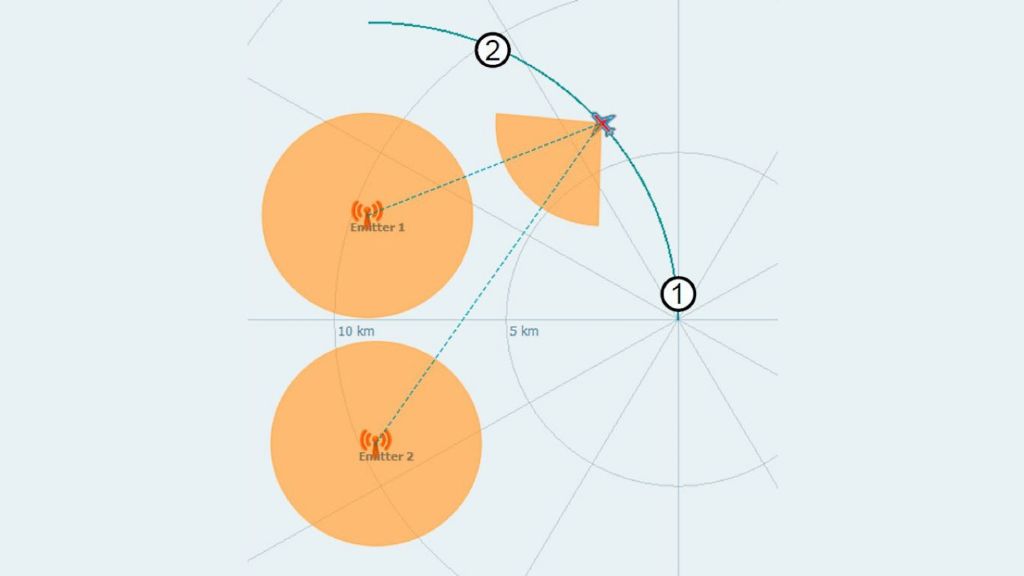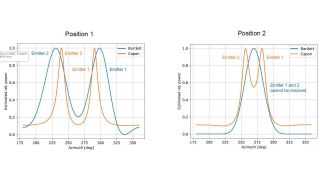Your task
Many modern military aircraft include advanced electronic support measures (ESM) as part of their self-protection systems. ESM systems commonly use interferometric direction finders to determine the AoAs of emitter signals. These advanced systems allow aircraft to locate emitters with a higher accuracy compared to earlier, simpler radar warning receivers that use amplitude based DF techniques. Plus, interferometric direction finders can better cope with signals simultaneously arriving from multiple emitters.
Interferometric direction finding exploits the fact that a signal incident on an antenna array will have a different phase shift at each individual array element. Several algorithms can be used to determine the AoA very accurately.
An AoA simulator needs to be flexible enough to provide everything from simple radar pulses for early hardware validation to complex, multi-emitter scenarios for testing at the system level.
The task of developing and testing a direction finder is greatly simplified if engineers can easily generate a variety of signals in the lab to verify the performance of a DUT against various emitter scenarios.
Ideally, the simulator hardware comes as a commercial offthe-shelf (COTS) solution, eliminating the need for designing expensive and inflexible custom hardware. For most accurate signal generation for AoA simulation, the test setup should offer a user-friendly option enabling precise alignment of amplitude, group delay and phase between the RF ports at a defined reference plane.
Defining signals and creating complex scenarios must also be easy and straightforward, avoiding the time-consuming task of writing extra simulation software.













